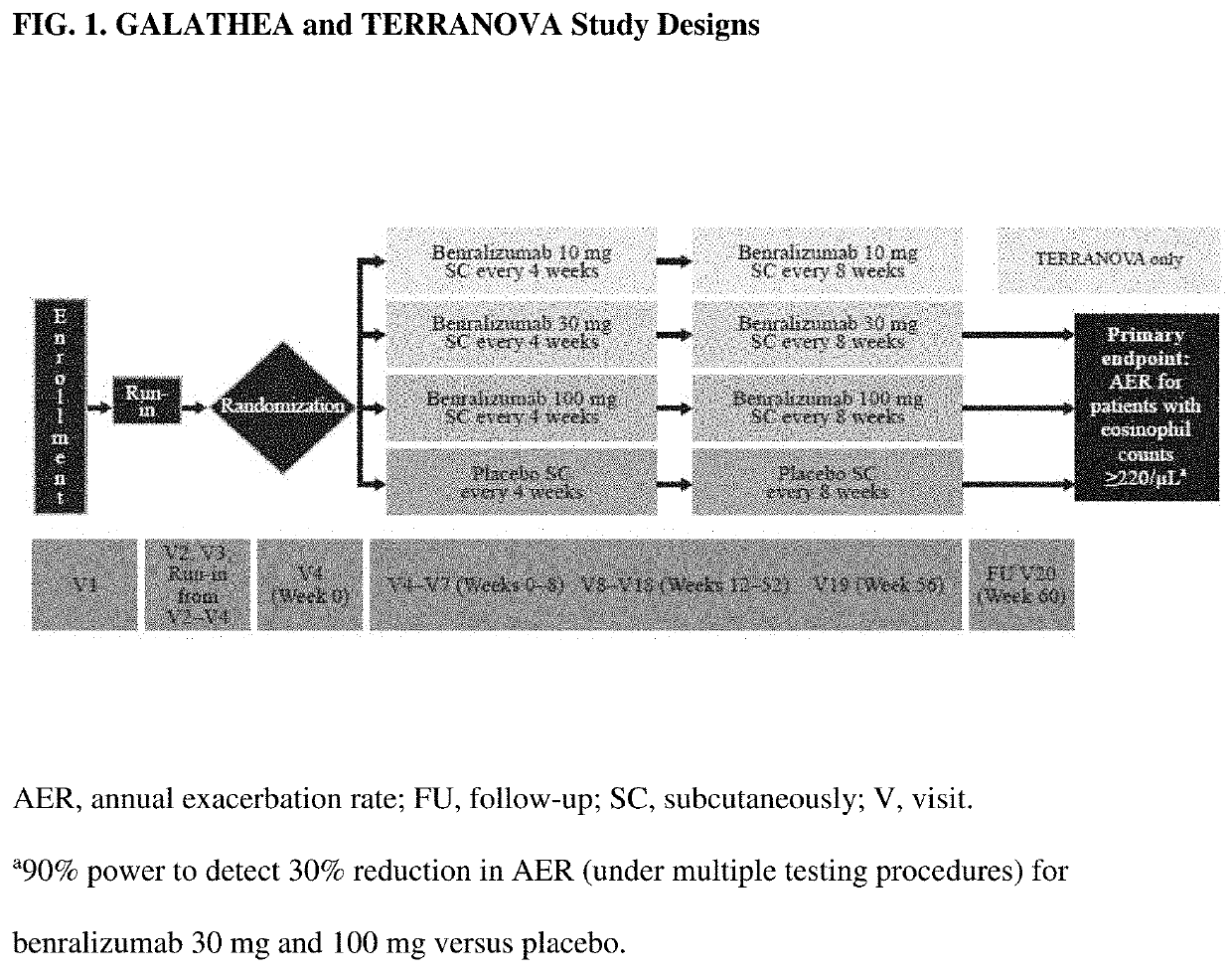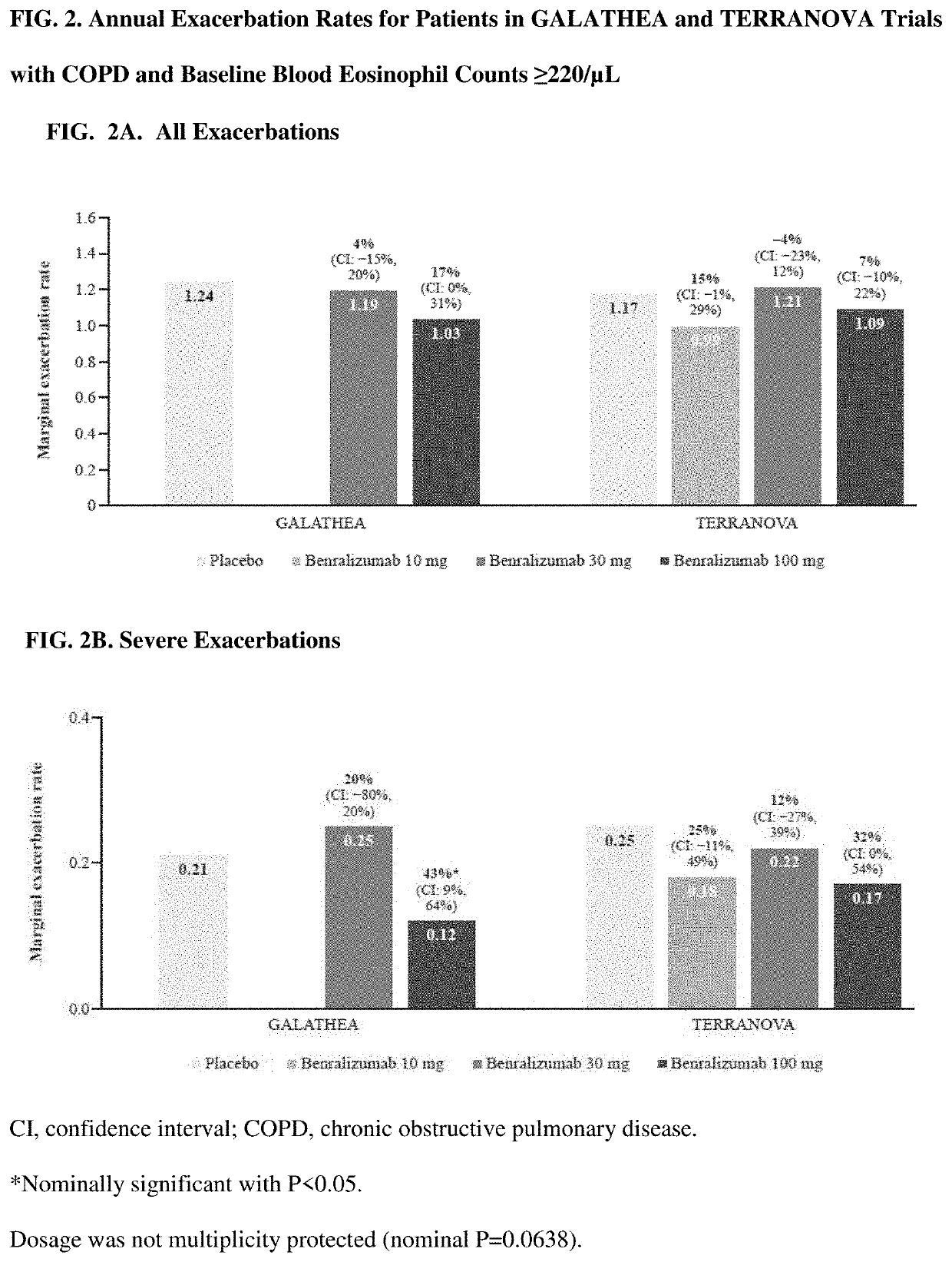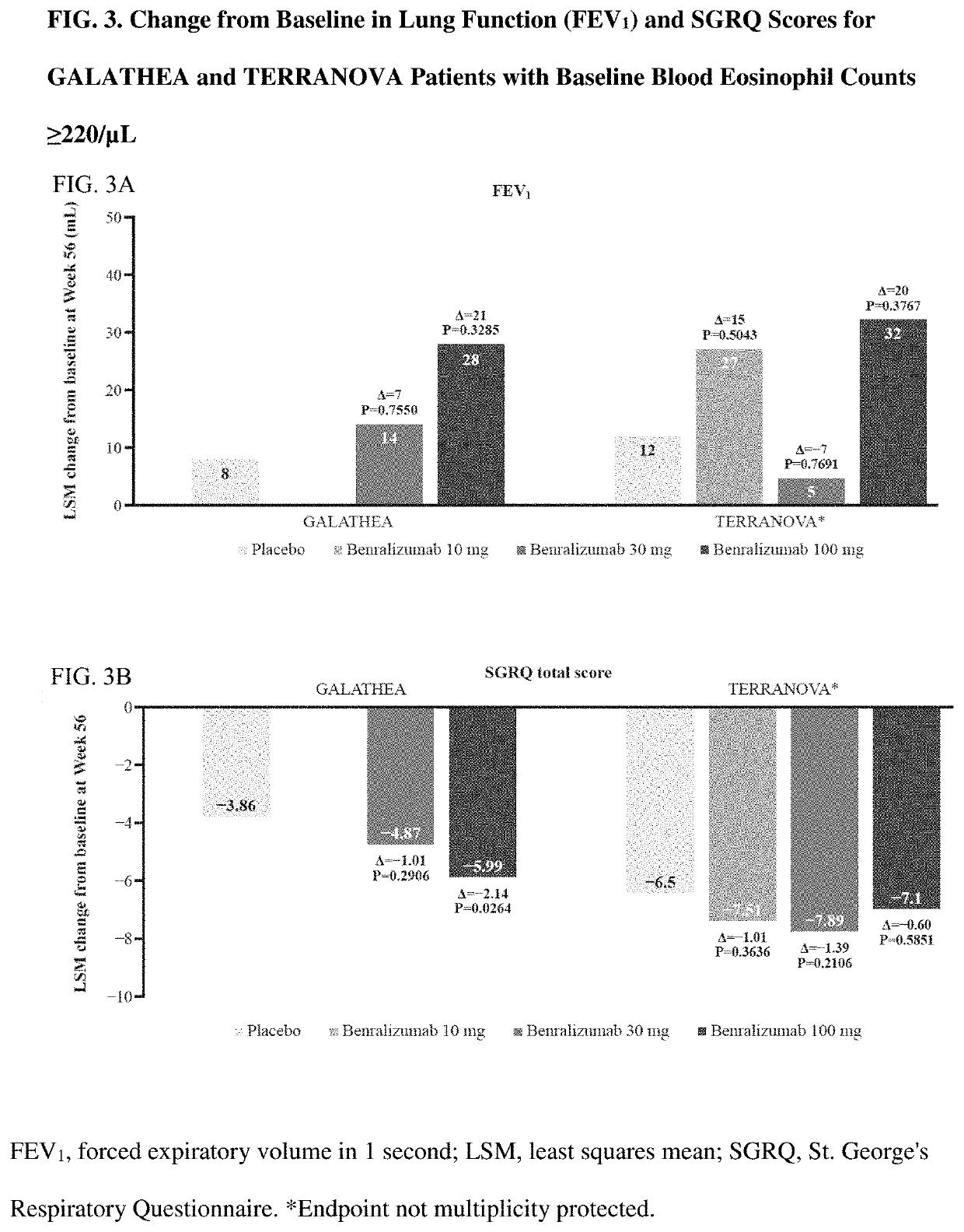Methods for treating chronic obstructive pulmonary disease in an enhanced patient population using benralizumab
- Summary
- Abstract
- Description
- Claims
- Application Information
AI Technical Summary
Benefits of technology
Problems solved by technology
Method used
Image
Examples
example 1
Patients and Methods
[0114]GALATHEA and TERRANOVA were Phase III complementary studies designed to evaluate efficacy (based on decrease in annual rate of moderate to severe exacerbations) and safety of benralizumab for patients with moderate to very severe COPD, at risk of exacerbations, and with blood eosinophil counts ≥220 / μL (a threshold predicted to select for patients likely to respond to benralizumab, based on previous results). The following Examples report the primary results of GALATHEA and TERRANOVA.
Trial Design
[0115]GALATHEA (NCT02138916) and TERRANOVA (NCT02155660) were Phase III, randomized, double-blind, placebo-controlled, parallel-group trials. Each trial comprised an enrollment visit, 3-week screening period, 56-week randomized treatment period, and follow-up visit (FIG. 1).
[0116]Eligible patients were stratified by country and blood eosinophil count (≥300 / μL and <300 / μL). Recruitment was capped centrally for cohorts with baseline eosinophil counts <220 / μL, 220-299 / μ...
example 2
Results
Study Population
[0174]Overall, GALATHEA and TERRANOVA patient characteristics and demographics were similar to those of the primary analysis population with baseline blood eosinophil counts ≥220 / μL (Table 1). Most patients were white men, and the average age was 65 years. The rates of current (nonprimary diagnosis) and past asthma were low (<7% and ≤10%, respectively, in all study groups) (Table 1). Most patients (93.0%) were classified as Global Initiative for COPD (GOLD) group D at baseline. The percentage of patients who changed background maintenance therapy during the on-treatment or post-treatment period was low (<5% and <1%, respectively). All results reported are for the primary analysis population (GALATHEA, n=1,120; TERRANOVA, n=1,545).
[0175]In GALATHEA and TERRANOVA, ≥83% and ≥79% of patients, respectively, in all treatment arms completed treatment. Primary reasons for treatment discontinuation were AEs and patient decision (data not shown).
TABLE 1Demographics and ...
example 3
A Further Phase 3 Study
[0187]This is a randomized, double-blind, placebo-controlled, parallel-group, multicenter, Phase 3 study to evaluate the efficacy and safety of a benralizumab 100 mg dose administered by subcutaneous (SC) injection every 4 weeks for the first 3 doses and then every 8 weeks thereafter (hereafter referred to as Q8W) in patients with moderate to very severe COPD with a history of frequent COPD exacerbations and elevated peripheral blood eosinophils (≥300 / μL). Eligible patients must have a history of ≥2 moderate and / or severe COPD exacerbations in the previous year despite receiving triple (ICS / LABA / LAMA) background therapy. Eligible patients must also have an elevated blood eosinophil count of ≥300 / μL at screening supported by at least 1 historical result of ≥150 / μL within the previous year.
[0188]In the previous Phase 3 studies, GALATHEA and TERRANOVA, long-term treatment with benralizumab 10, 30, or 100 mg Q8W through Week 48 was well tolerated in patients with ...
PUM
| Property | Measurement | Unit |
|---|---|---|
| Fraction | aaaaa | aaaaa |
| Fraction | aaaaa | aaaaa |
| Fraction | aaaaa | aaaaa |
Abstract
Description
Claims
Application Information
 Login to View More
Login to View More - R&D
- Intellectual Property
- Life Sciences
- Materials
- Tech Scout
- Unparalleled Data Quality
- Higher Quality Content
- 60% Fewer Hallucinations
Browse by: Latest US Patents, China's latest patents, Technical Efficacy Thesaurus, Application Domain, Technology Topic, Popular Technical Reports.
© 2025 PatSnap. All rights reserved.Legal|Privacy policy|Modern Slavery Act Transparency Statement|Sitemap|About US| Contact US: help@patsnap.com



